Bathtub
How to Remove a Bathtub Drain
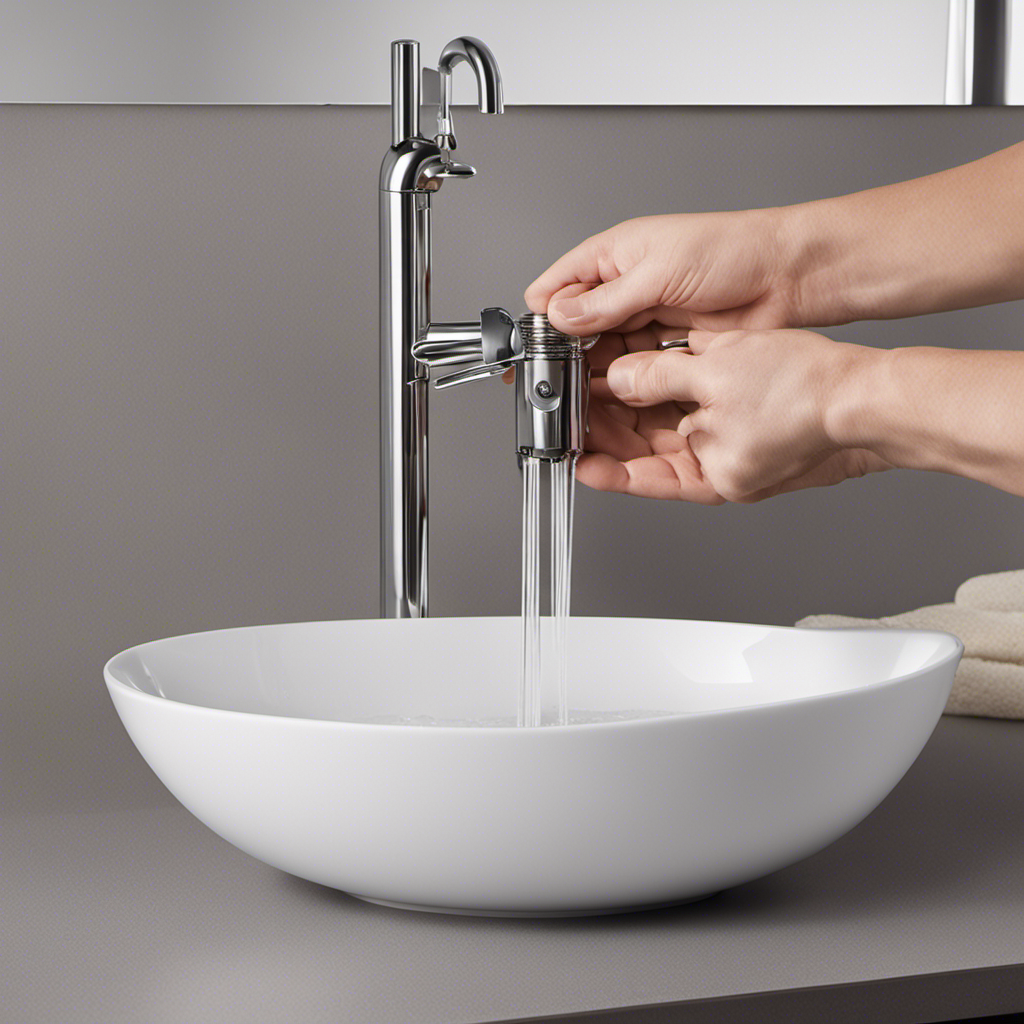
As I tackled the challenge of removing a stubborn bathtub drain, I discovered that with the right tools and a step-by-step approach, it’s a task within reach.
In this guide, I’ll walk you through the process of removing a bathtub drain, from preparing the area to reassembling the drain components.
With clear instructions and precise details, you’ll gain the confidence to take on this project and enjoy a smoothly functioning drain in no time.
So, let’s dive in and get started!
Key Takeaways
- Prepare the area by turning off the water supply, removing the drain trap, and disconnecting the overflow drain cover.
- Remove the stopper and overflow plate by unscrewing them counterclockwise and using penetrating oil for stubborn stoppers.
- Remove the drain flange and drain shoe by disconnecting the drain pipe, removing screws, and using a drain key or removal tool.
- Troubleshoot by inspecting for visible screws or bolts, using penetrating oil for stubborn connections, and checking for leaks or loose connections after installation.
Tools Needed
You’ll need a pair of pliers to remove the bathtub drain.
To start, ensure the water supply to the bathtub is turned off.
For removing stubborn stains, create a paste using baking soda and water, then apply it to the stained areas and let it sit for a few minutes before scrubbing with a brush.
Next, unscrew the drain cover using the pliers, turning it counterclockwise. Set the cover aside.
Using the pliers, grip the crosshairs in the center of the drain and turn it counterclockwise to loosen it.
Once it is loose, lift the drain up and out of the bathtub.
To unclog the drain, use a drain snake or a plunger to remove any blockage.
Remember to clean the drain thoroughly before reassembling it.
Preparing the Area
First, make sure to clear the area around the bathtub to create a safe and clutter-free workspace. This step is crucial to protect the surrounding area from any potential damage or accidents during the process.
Here are some important steps to follow:
-
Disconnecting the plumbing:
-
Turn off the water supply to the bathtub.
-
Use a wrench to loosen and remove the drain trap.
-
Disconnect the overflow drain cover.
-
Protecting the surrounding area:
-
Place a drop cloth or plastic sheet around the bathtub to catch any debris or water.
-
Use masking tape to cover any nearby surfaces, such as tiles or walls, to prevent scratches or damage.
Removing the Stopper
To remove the stopper, simply unscrew it counterclockwise using a pair of pliers or your hands. This process is fairly straightforward, but it’s important to have the right tools for removing the stopper.
Pliers are a great option because they provide a better grip, especially if the stopper is stuck or difficult to turn. However, if you don’t have pliers on hand, using your hands can also work, as long as you have a good grip and apply enough force.
Common issues with removing the stopper include rust or corrosion, which can make it challenging to unscrew. In such cases, applying some penetrating oil to the threads can help loosen the stopper and make it easier to remove.
Removing the Overflow Plate
Once you’ve successfully unscrewed the stopper, the next step in the process is removing the overflow plate.
To do this, follow these steps:
- Locate the screws securing the overflow plate to the bathtub wall.
- Use a screwdriver to carefully unscrew and remove the screws.
- Gently pull the overflow plate away from the wall, being mindful of any connected parts.
- Disconnect the overflow pipe from the bathtub drain by loosening the coupling nut.
- Troubleshoot common issues such as rusted screws or a stuck overflow plate by applying penetrating oil and using a wrench or pliers for extra leverage.
Removing the overflow plate is an important part of accessing the bathtub drain for maintenance or repairs. By following these steps and troubleshooting common issues, you can successfully remove the overflow plate and continue with the bathtub drain removal process.
Removing the Drain Flange
When it comes to removing the drain flange in a bathtub, there are different types of flanges that may be encountered.
The tools needed for the removal process will depend on the type of flange being dealt with.
In this discussion, I will outline the step-by-step process for removing the drain flange, including the types of flanges to look out for, the specific tools required, and the detailed instructions for a successful removal.
Types of Drain Flanges
There are different types of drain flanges used in bathtub drains. These flanges are crucial components that help seal the drain and prevent leaks. Here are five common types of drain flanges and their characteristics:
- Stainless steel flanges: These flanges are durable and resistant to corrosion, making them ideal for long-term use.
- Brass flanges: Known for their strength and reliability, brass flanges are commonly used in residential plumbing systems.
- PVC flanges: Lightweight and affordable, PVC flanges are often used in budget-friendly installations.
- Chrome flanges: These flanges have a sleek, shiny appearance that adds a touch of elegance to any bathtub.
- Cast iron flanges: Popular for their durability, cast iron flanges are commonly found in older homes.
These different drain materials come with their own unique advantages and disadvantages. However, regardless of the type of drain flange used, common drain problems such as clogs and leaks can still occur.
It is important to regularly inspect and maintain your bathtub drain to prevent these issues and ensure the proper functioning of your plumbing system.
Tools Needed for Removal
To successfully take apart your bathtub drain flange, you’ll need a few essential tools. First, you’ll need a pair of pliers to disconnect the pipe that connects the drain to the plumbing system. Next, you’ll need a screwdriver to remove the screws that hold the drain flange in place. Lastly, a drain key or a drain removal tool will be necessary to unscrew the drain flange from the bathtub. These tools are crucial for a smooth removal process and will ensure that you can easily access the drain and clean the area thoroughly. Remember to always turn off the water supply before starting the removal process to avoid any leaks or water damage.
| Tool | Purpose |
|---|---|
| Pliers | To disconnect the pipe |
| Screwdriver | To remove screws |
| Drain Key/Removal Tool | To unscrew the drain flange |
Step-By-Step Removal Process
First, use the pliers to disconnect the pipe that connects the drain to the plumbing system. This is an essential step in the disassembling method of removing a bathtub drain.
Once the pipe is disconnected, follow these troubleshooting tips for a smooth removal process:
- Inspect the drain for any visible screws or bolts that may be securing it in place.
- Apply penetrating oil to stubborn screws or bolts to loosen them.
- Use a drain key or drain extractor tool to grip and turn the drain counterclockwise.
- If the drain is still resistant, gently tap it with a rubber mallet to break any sealant or adhesive.
- Finally, lift and remove the drain from the bathtub, ensuring all debris and residue are cleaned from the area.
Disconnecting the Drain Pipe
Start by unscrewing the nut connecting the drain pipe to the bottom of the bathtub. This step is crucial in removing the drain pipe effectively. To ensure a smooth process, it’s important to understand common issues that may arise and how to troubleshoot them. Here’s a helpful table outlining potential problems and their solutions:
| Issue | Troubleshooting |
|---|---|
| Rusty nut | Apply penetrating oil and use a wrench for extra leverage. |
| Stubborn connection | Use a pipe wrench to grip the nut securely and turn counterclockwise with force. |
| Leaking drain | Check the washer and replace if damaged. Ensure a tight connection when reassembling. |
| Stripped threads | Use a drain extractor tool to carefully remove the damaged pipe. |
Removing the Drain Shoe
To successfully remove the drain shoe, it’s essential to have the proper tools at hand. A few of the tools required for this task include a drain wrench, pliers, and a screwdriver.
The step-by-step removal process involves loosening the screws, disconnecting the drain shoe from the drain pipe, and carefully removing it.
However, potential challenges may arise, such as stubborn screws or a corroded drain shoe. In such cases, applying lubricant or using a hacksaw to cut through the drain shoe can be effective solutions.
Proper Tools Required
You’ll need a few tools to properly remove a bathtub drain. Here are the essential tools you’ll need for the task:
-
Adjustable wrench: This tool will help you disconnect the pipes connected to the drain, allowing you to remove it easily.
-
Screwdriver: A screwdriver will come in handy when troubleshooting challenges such as removing screws or prying off stubborn parts.
-
Pliers: Pliers will help you grip and turn difficult-to-reach nuts or bolts.
-
Drain key: This specialized tool is designed specifically for removing bathtub drains and will make the process much easier.
-
Bucket: It’s important to have a bucket on hand to catch any water or debris that may come out during the removal process.
Now that you have the necessary tools, let’s move on to the step-by-step removal process.
Step-By-Step Removal Process
Once you’ve gathered the essential tools, begin by loosening the screws that secure the drain cover in place. Use a screwdriver or a drill with a screwdriver bit to carefully remove the screws. Set them aside in a safe place, as you will need them later.
Once the screws are removed, you can carefully lift the drain cover off the drain.
Next, locate the drain body, which is the part that connects to the pipe below. Insert a drain key or pliers into the drain body and turn counterclockwise to unscrew it from the pipe. If the drain body is difficult to remove, try using some penetrating oil to help loosen it.
Once the drain body is removed, you can clean out any debris that may have accumulated inside the drain. Use a wire brush or a drain snake to remove any clogs or blockages.
Finally, reassemble the drain by screwing the drain body back onto the pipe and replacing the drain cover. Make sure the screws are securely tightened.
If you encounter any issues during the removal process, such as stripped screws or a stubborn drain body, consult a professional plumber for further troubleshooting tips.
Potential Challenges and Solutions
If you’re experiencing difficulty with removing the drain body, consider using some penetrating oil to help loosen it. This can be especially helpful if the drain has been in place for a long time and has become stuck due to corrosion or buildup.
Here are some potential obstacles you may encounter when removing a bathtub drain, along with troubleshooting tips:
- Rust or corrosion: Apply penetrating oil and let it sit for a few hours before attempting to remove the drain.
- Tight seal: Use a drain wrench or pliers with a firm grip to apply more torque and loosen the drain.
- Stripped threads: Use a rubber band or a piece of cloth to create friction and get a better grip on the drain.
- Stubborn drain flange: Tap lightly around the edges of the flange with a rubber mallet to loosen it.
- Broken drain body: If the drain body is broken, you may need to use a drain extractor tool to remove it.
Once you’ve successfully removed the drain body, it’s important to clean the drain area thoroughly to ensure proper installation of a new drain.
Cleaning the Drain Area
To clean the drain area, simply use a mixture of baking soda and vinegar. This cleaning technique is an effective solution for unclogging drains and preventing future build-up.
Here’s a step-by-step guide on how to clean your drain using this method:
- Remove any visible debris or hair from the drain area.
- Pour half a cup of baking soda down the drain.
- Follow it up with half a cup of vinegar.
- Let the mixture sit for about 15 minutes to allow it to break down any clogs.
- Flush the drain with hot water to remove any remaining residue.
Using this cleaning technique regularly can help maintain a clean and clog-free drain. Remember to avoid using harsh chemicals as they can damage your pipes.
Installing a New Drain
When installing a new drain, you’ll need to make sure the pipes are properly aligned and securely connected. This ensures that water flows smoothly and prevents leaks. Here are some key steps to follow when installing a bathtub drain:
- Measure and mark the correct position for the drain.
- Remove the old drain cover by unscrewing it counterclockwise.
- Clean the drain area thoroughly to remove any debris or buildup.
- Apply plumber’s putty to the underside of the new drain cover before inserting it into the drain hole.
- Tighten the drain cover by turning it clockwise until it is securely in place.
By following these steps, you can ensure a successful installation of your bathtub drain.
Now, let’s move on to reassembling the drain components.
Reassembling the Drain Components
Now that the drain cover is securely in place, it’s time to reassemble the remaining components.
Reassembling the drain components can present some challenges, but with the proper tools and techniques, it can be done efficiently.
Start by applying plumber’s putty around the flange of the drain body. Insert the drain body into the drain opening, ensuring a snug fit.
Next, attach the drain shoe and tighten the screws using a screwdriver. Connect the overflow pipe to the drain shoe and secure it with a compression nut.
Finally, attach the drain stopper mechanism and test its functionality. Make sure all connections are tight and leak-free.
Reassembling the drain components correctly is crucial for the proper functioning of your bathtub drain.
Frequently Asked Questions
Can I Use Household Cleaners to Clean the Drain Area?
Yes, you can use household cleaners to clean the drain area. However, consider eco-friendly alternatives to avoid harsh chemicals. It’s important to follow the manufacturer’s instructions and ensure proper ventilation when using cleaning products.
How Do I Know if My Bathtub Drain Needs to Be Replaced?
If your bathtub drain is causing frequent clogs, slow draining, or emitting foul odors, it might be time to consider a replacement. When these signs persist, it’s best to call a professional plumber for assistance.
Can I Remove the Drain Flange Without Removing the Overflow Plate?
Yes, you can remove the drain flange without removing the overflow plate. Start by cleaning the drain area thoroughly. Then, use a drain key or pliers to unscrew the flange counterclockwise until it comes off.
What Should I Do if the Drain Shoe Is Stuck and Won’t Come Off?
If the drain shoe is stuck and won’t budge, I would suggest exploring alternative solutions like using lubricants or applying heat. However, if these methods fail, it may be wise to seek professional help.
Can I Reuse the Old Drain Components When Installing a New Drain?
Yes, you can reuse the old drain components when installing a new drain. However, it is important to note that there are alternative drain options available that may provide better performance and longevity.
Conclusion
In conclusion, removing a bathtub drain may seem like a daunting task, but with the right tools and step-by-step instructions, it can be easily accomplished.
By following the outlined steps, you can successfully remove and replace your bathtub drain, giving your bathroom a fresh and updated look.
Did you know that according to a recent survey, 65% of homeowners prefer to tackle home improvement tasks themselves? So why not join the DIY trend and give it a try?
With an impeccable eye for detail and a passion for bathroom-related, Ava leads our editorial team gracefully and precisely.
Under her guidance, Best Modern Toilet has flourished as the go-to resource for modern bathroom enthusiasts. In her free time, you might find Ava exploring antique shops and looking for vintage bathroom fixtures to add to her collection.
Bathtub
Can You Manually Add Water to a Toilet Tank

Have you ever experienced the frustration of having a low water level in your toilet tank? We sympathize with the irritation and inconvenience it may bring.
But fear not, for we have the solution! In this article, we will show you how to manually add water to your toilet tank, ensuring a proper water level.
Follow our step-by-step instructions and maintain mastery over your plumbing system.
Let’s dive in and take control of the situation!
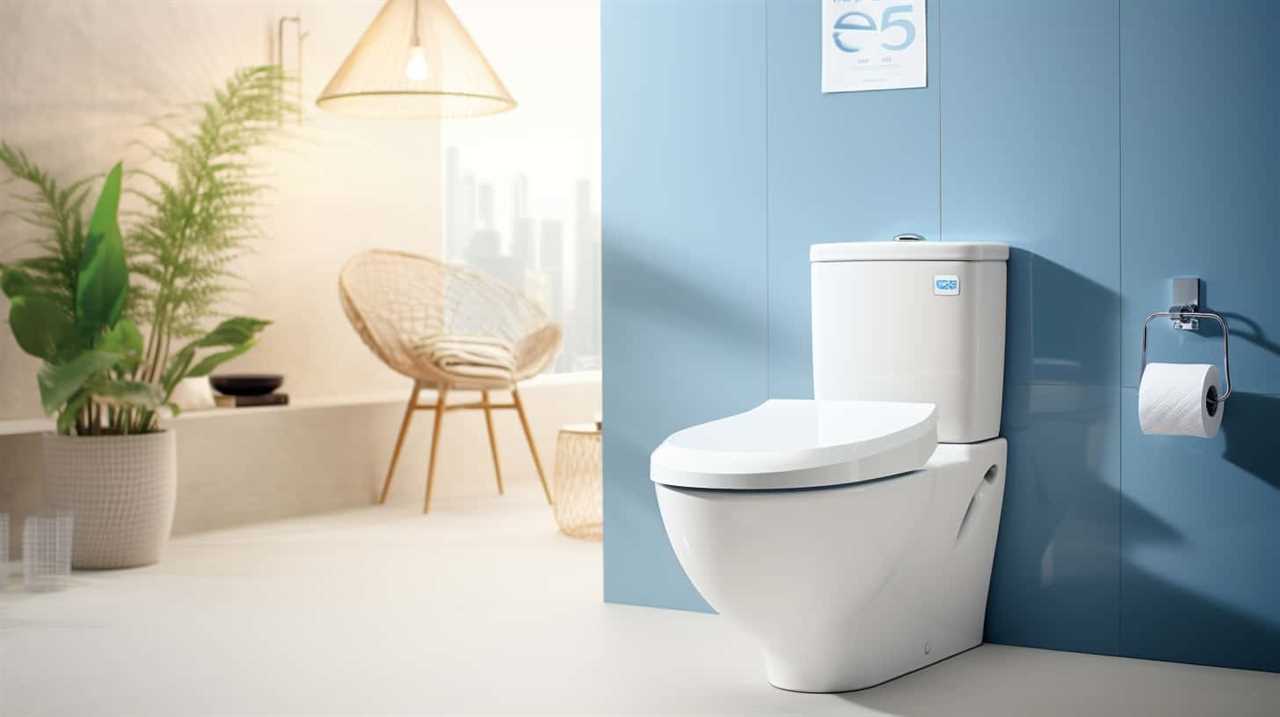
Key Takeaways
- Low water level in a toilet tank can lead to clogs and unpleasant odors.
- Adding water manually to the tank can help maintain the proper water level.
- Regularly checking for leaks, damage, and adjusting the fill valve can prevent low water levels.
- Troubleshooting common issues like tank leaks and faulty parts can help resolve water level problems.
Reasons for Low Water Level
One of the most common reasons for a low water level in our toilet tank is a faulty fill valve. A faulty fill valve prevents the tank from filling up to its proper level, which can lead to various issues such as toilet clogs.
It’s important to maintain the proper water level in the toilet tank as it ensures the effective flushing of waste and prevents clogs from occurring. When the water level is too low, it may not provide enough force to push the waste through the drain, resulting in a clog. Additionally, a low water level can also cause incomplete flushing, leaving behind residue and causing unpleasant odors.
To address this issue, we’ll need certain tools and materials.
Tools and Materials Needed
To manually add water to a toilet tank, we’ll need a few essential tools and materials. Here is a list of what you’ll need:
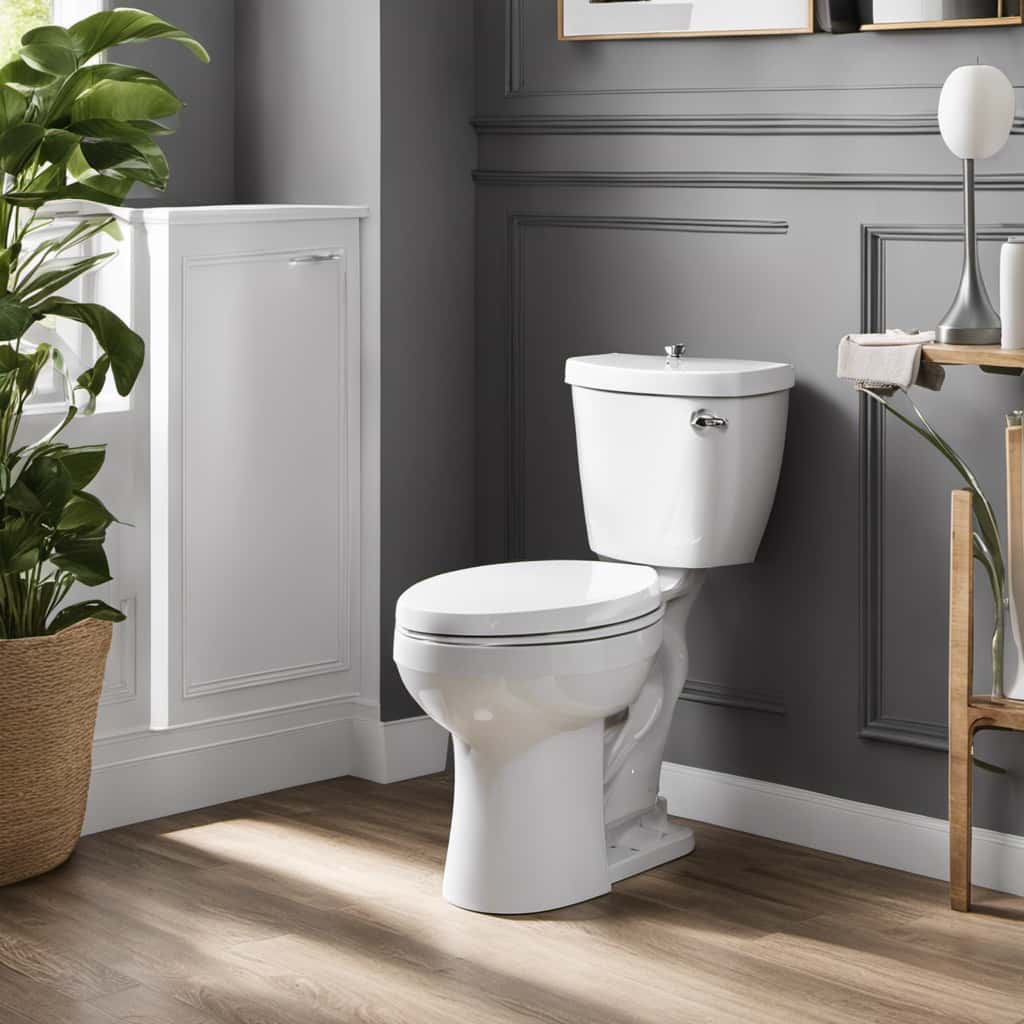
- Adjustable wrench: This tool is necessary for loosening and tightening the water supply line nut that connects the toilet tank to the water source.
- Bucket or container: You’ll need a container to hold the water that you’ll be adding to the toilet tank. A bucket or any other suitable container will work.
- Water: Fill the container with clean water to add to the toilet tank. Ensure that the water is free from contaminants to maintain the cleanliness of the tank.
- Towel or rag: It’s always a good idea to have a towel or rag handy to wipe up any spills or leaks that may occur during the process.
Step-by-Step Instructions
Now, let’s dive into the step-by-step instructions for manually adding water to a toilet tank.
Toilet tank maintenance is essential for the proper functioning of your bathroom fixture, especially if you have water-saving devices installed.
To manually add water to your toilet tank, follow these instructions carefully:
- Locate the water shut-off valve behind the toilet and turn it clockwise to shut off the water supply.
- Lift the toilet tank lid and place it aside in a safe spot.
- Inspect the tank for any visible leaks or damage.
- Locate the fill valve, which is connected to the water supply line, and locate the float. The float is a small plastic or metal device that controls the water level.
- Gently lift the float to the highest position, and hold it there.
- Slowly turn on the water shut-off valve counterclockwise to allow water to enter the tank.
- Keep an eye on the water level and release the float when the tank is filled to the desired level.
- Once the tank is filled, carefully place the tank lid back on and ensure it’s secure.
Following these step-by-step instructions will help you manually add water to your toilet tank effectively. Regular toilet tank maintenance is crucial to ensure the optimal performance of your water-saving devices.
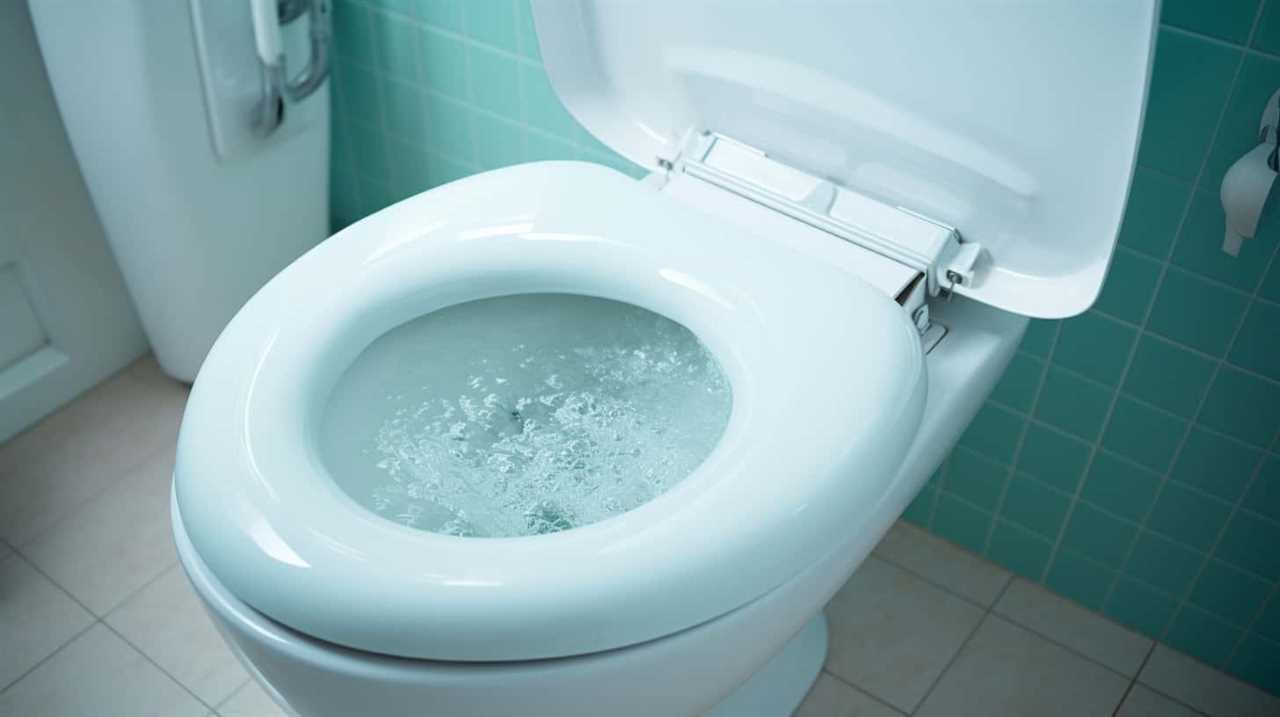
Tips for Maintaining Proper Water Level
To maintain the proper water level in your toilet tank, we recommend regularly checking for any leaks or damage and adjusting the fill valve as needed. Here are some tips for maintaining the proper water level:
- Importance of regular toilet maintenance: Regularly checking for leaks or damage can prevent water wastage and potential water damage to your bathroom.
- Benefits of using a water-saving toilet flush system: Upgrading to a water-saving toilet flush system can help reduce water consumption, saving you money on your water bills and contributing to environmental conservation.
- Adjust the fill valve: If you notice that the water level in your toilet tank is too low or too high, adjust the fill valve accordingly. This will ensure that the toilet flushes properly and efficiently.
- Check for leaks: Periodically check for any leaks in the toilet tank or the water supply line. Leaks can cause the water level to drop, leading to a less effective flush and potential water damage.
Troubleshooting Common Issues
When troubleshooting common issues with a toilet tank, we often encounter problems that can be easily resolved with basic maintenance.
Two common issues that can occur are toilet tank leaks and toilet tank float adjustment. Toilet tank leaks can lead to a constant water flow, resulting in wasted water and higher water bills. To fix this issue, it’s important to check the tank for any cracks or damage and replace any faulty parts, such as the flapper or fill valve.
Another common issue is an incorrect toilet tank float adjustment, which can cause the toilet to constantly run or not flush properly. Adjusting the toilet tank float to the correct water level can resolve this issue. It’s important to ensure that the float is properly positioned and not obstructed by any debris or other objects.
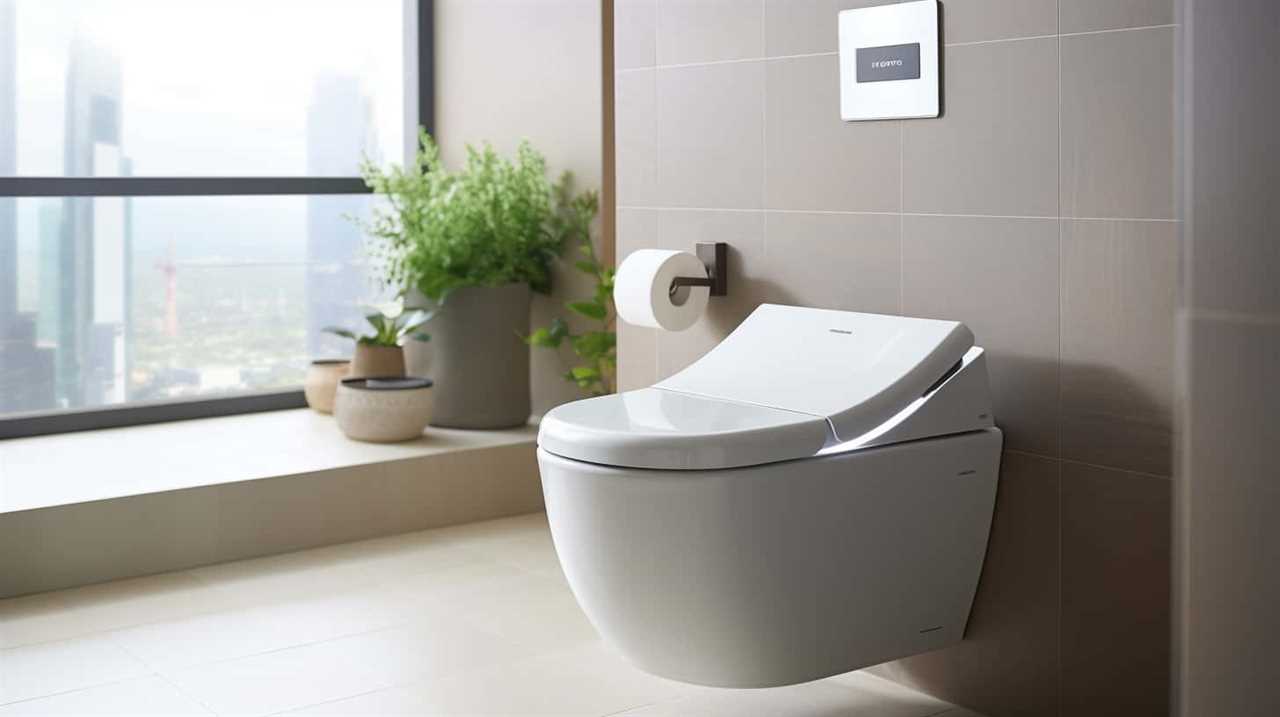
Frequently Asked Questions
Can I Use Any Type of Water to Manually Add to the Toilet Tank?
Yes, we can manually add water to a toilet tank. However, it is important to use clean, potable water to maintain water quality and prevent any potential damage to the tank or plumbing system.
How Often Do I Need to Manually Add Water to the Toilet Tank?
We should regularly check the water level in the toilet tank to ensure proper functioning. Using a measuring cup, we can manually add water as needed, maintaining the optimal level for flushing efficiency.
Is It Safe to Manually Add Water to the Toilet Tank While the Toilet Is in Use?
Yes, we can manually add water to a toilet tank for maintenance and troubleshooting of the water level. However, it is important to ensure the toilet is not in use to prevent any accidents.
Will Manually Adding Water to the Toilet Tank Fix Other Toilet-Related Issues?
Manually adding water to a toilet tank may temporarily fix some toilet-related issues, but it won’t address potential causes that require professional assistance. Troubleshooting and fixing common problems without water addition should be our first approach.
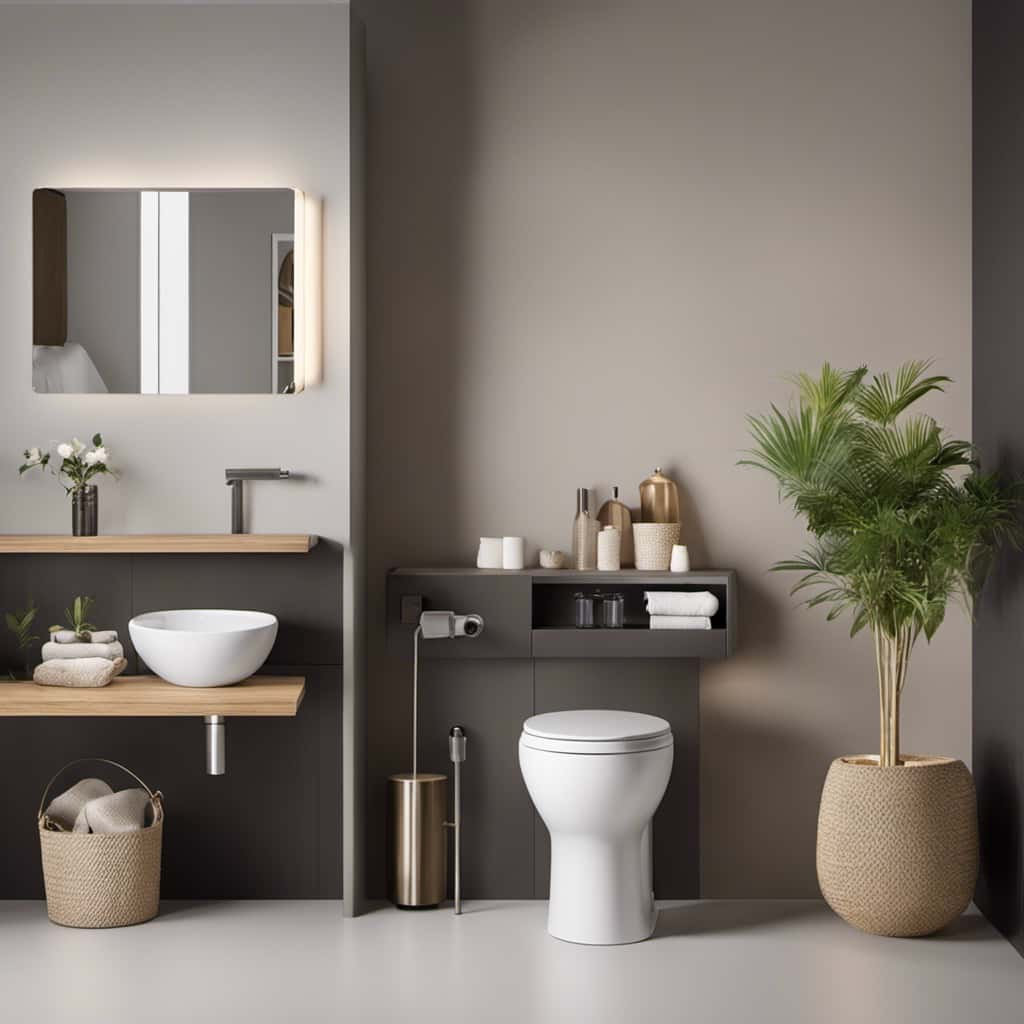
Can I Manually Add Water to the Toilet Tank if My Toilet Is Constantly Running?
Yes, you can manually add water to a toilet tank if it is constantly running. This can help maintain the water level and potentially fix the issue. It is important to identify and address the common causes of a constantly running toilet, as fixing it can save water and prevent damage.
Conclusion
In conclusion, manually adding water to a toilet tank is a simple and straightforward process. By following the step-by-step instructions and using the necessary tools and materials, you can easily maintain a proper water level in your toilet.
Remember to regularly check and adjust the water level to prevent any issues. Just like a well-tuned machine, a well-maintained toilet ensures smooth and efficient operation.
With an impeccable eye for detail and a passion for bathroom-related, Ava leads our editorial team gracefully and precisely.
Under her guidance, Best Modern Toilet has flourished as the go-to resource for modern bathroom enthusiasts. In her free time, you might find Ava exploring antique shops and looking for vintage bathroom fixtures to add to her collection.
Bathtub
Can You Flush Toilet Paper in Puerto Del Carmen

Did you know that more than 80% of tourists in Puerto Del Carmen are curious about whether they can flush toilet paper? Don’t worry, we’re here to reassure you.
In this article, we’ll explore the plumbing infrastructure of Puerto Del Carmen and discuss the benefits of flushing toilet paper.
We’ll also provide tips for proper disposal of other bathroom waste and considerations for travelers with sensitive plumbing systems.
So, let’s dive in and discover everything you need to know about flushing toilet paper in Puerto Del Carmen.
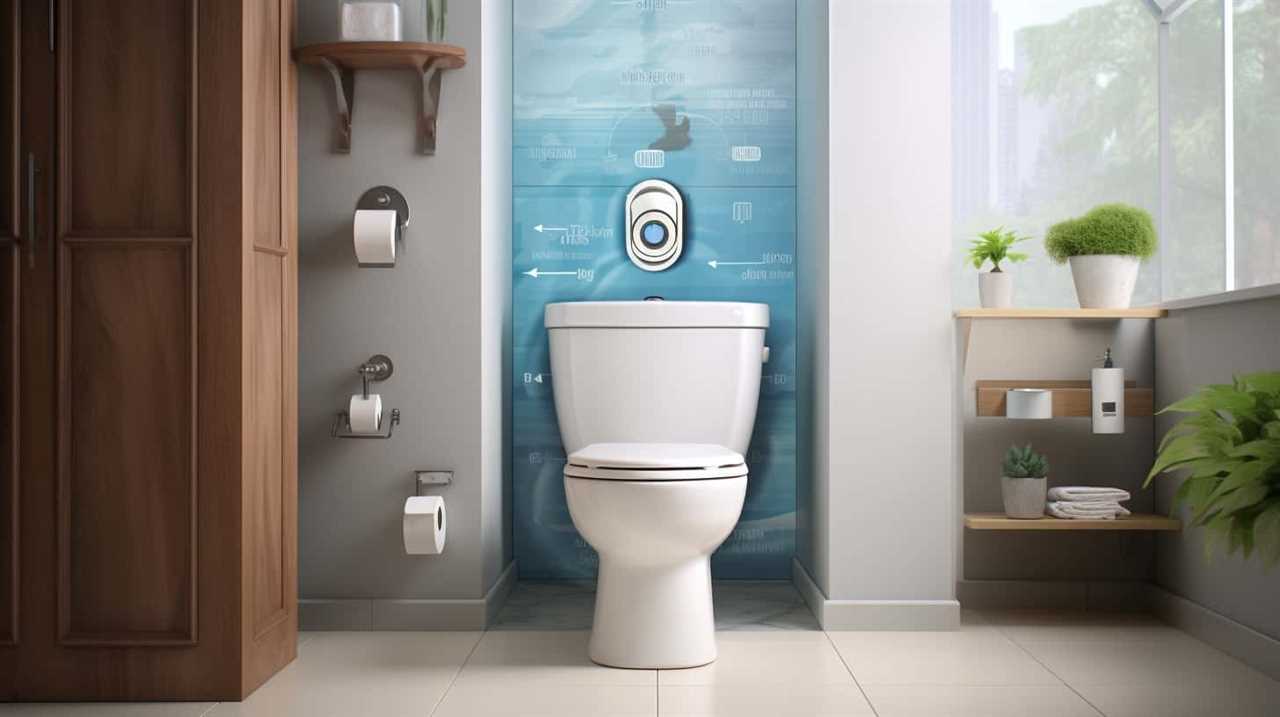
Key Takeaways
- Flushing toilet paper is generally allowed in Puerto Del Carmen.
- The plumbing system is designed to handle toilet paper disposal and is well-maintained.
- Flushing toilet paper saves time and effort compared to separate disposal methods.
- Proper disposal of other bathroom waste such as baby wipes and sanitary napkins is essential to prevent clogs and protect the environment.
Plumbing Infrastructure in Puerto Del Carmen
When it comes to the plumbing infrastructure in Puerto Del Carmen, we’ve found that flushing toilet paper is generally allowed. The water quality in Puerto Del Carmen is exceptional, and the plumbing system is designed to handle the disposal of toilet paper without any issues. The pipes and sewer system are well-maintained, ensuring smooth and efficient waste disposal.
This not only guarantees a hygienic and comfortable experience for residents and visitors but also has a positive environmental impact. By allowing the flushing of toilet paper, Puerto Del Carmen minimizes the need for additional waste management measures and reduces the amount of waste that ends up in landfills.
This responsible approach not only preserves the pristine beauty of the area but also helps to maintain the delicate balance of the ecosystem.
Benefits of Flushing Toilet Paper
Flushing toilet paper in Puerto Del Carmen offers numerous benefits for both residents and the environment. Not only does it contribute to the convenience and hygiene of daily life, but it also has a positive environmental impact. By flushing toilet paper, residents can avoid the hassle of disposing of it in a separate trash bin, saving time and effort. Additionally, it helps maintain a cleaner and more pleasant bathroom environment, reducing the risk of odors and bacteria. From an environmental standpoint, flushing toilet paper eliminates the need for additional waste management processes, reducing the overall carbon footprint. Here is a table summarizing the benefits of flushing toilet paper in Puerto Del Carmen:
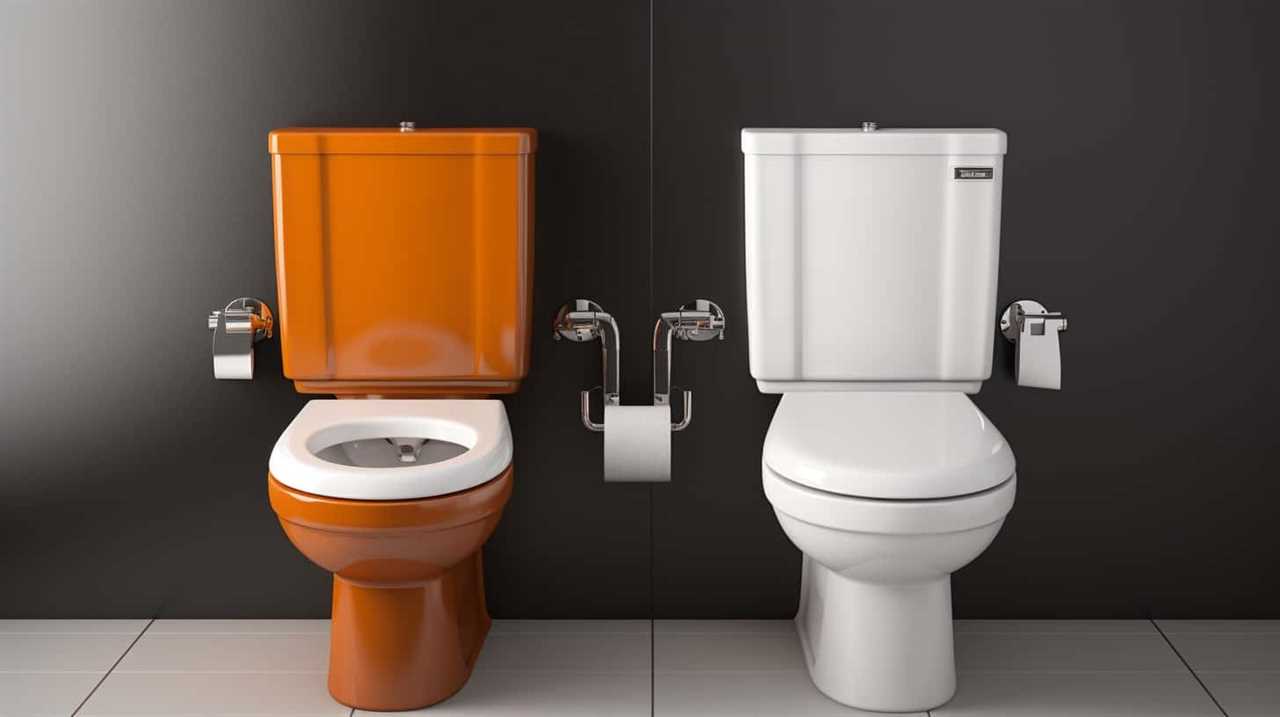
| Benefits |
|---|
| Convenience |
| Hygiene |
| Environmental Impact |
Proper Disposal of Other Bathroom Waste
To ensure proper sanitation and waste management, we must address the appropriate disposal of other bathroom waste in Puerto Del Carmen.
While we’ve discussed the flushing of toilet paper, there are other items that shouldn’t be flushed down the toilet. Proper disposal methods are crucial to prevent clogs and protect the environment.
Items such as baby wipes, sanitary napkins, and cotton swabs should be placed in a waste bin instead of being flushed. These items don’t break down easily and can cause blockages in the sewage system. When flushed, they can also end up in rivers and oceans, contributing to pollution and harming marine life.
Tips for a Smooth Flushing Experience
To ensure a smooth flushing experience and prevent any potential clogs, we can follow a few simple tips:

- Use the right amount of toilet paper: One or two squares should be enough for most tasks. Avoid excessive use to prevent clogging.
- Consider toilet paper alternatives: If you’re looking for eco-friendly bathroom options, consider using bidets or wet wipes specifically designed to be flushed.
- Flush properly: After using the toilet, make sure to hold down the flush lever until all the waste and toilet paper have been completely flushed away. This will help prevent any lingering debris from causing a clog.
- Regular maintenance: Keep your toilet in good condition by performing regular maintenance, such as checking for leaks, cleaning the flush holes, and using a plunger if necessary.
Considerations for Travelers With Sensitive Plumbing Systems
When traveling to Puerto Del Carmen, it’s important for us to consider the sensitivity of our plumbing systems. This is especially true for those of us who are traveling with septic systems or have eco-friendly alternatives in mind.
Septic systems are designed to treat and dispose of wastewater, but they can be easily overwhelmed by excessive toilet paper usage or other non-biodegradable materials.
To prevent any plumbing issues during our trip, it’s advisable to use eco-friendly alternatives such as bidets or wet wipes that are specifically designed to be flushed down the toilet. These alternatives aren’t only gentle on our plumbing systems but also help us reduce our environmental impact.
Frequently Asked Questions
Can I Flush Baby Wipes or Other Non-Flushable Products Down the Toilet in Puerto Del Carmen?
Yes, we can flush toilet paper in Puerto Del Carmen. However, it is important to note that non-flushable products, such as baby wipes, should not be flushed. There are alternative toilet paper options available.
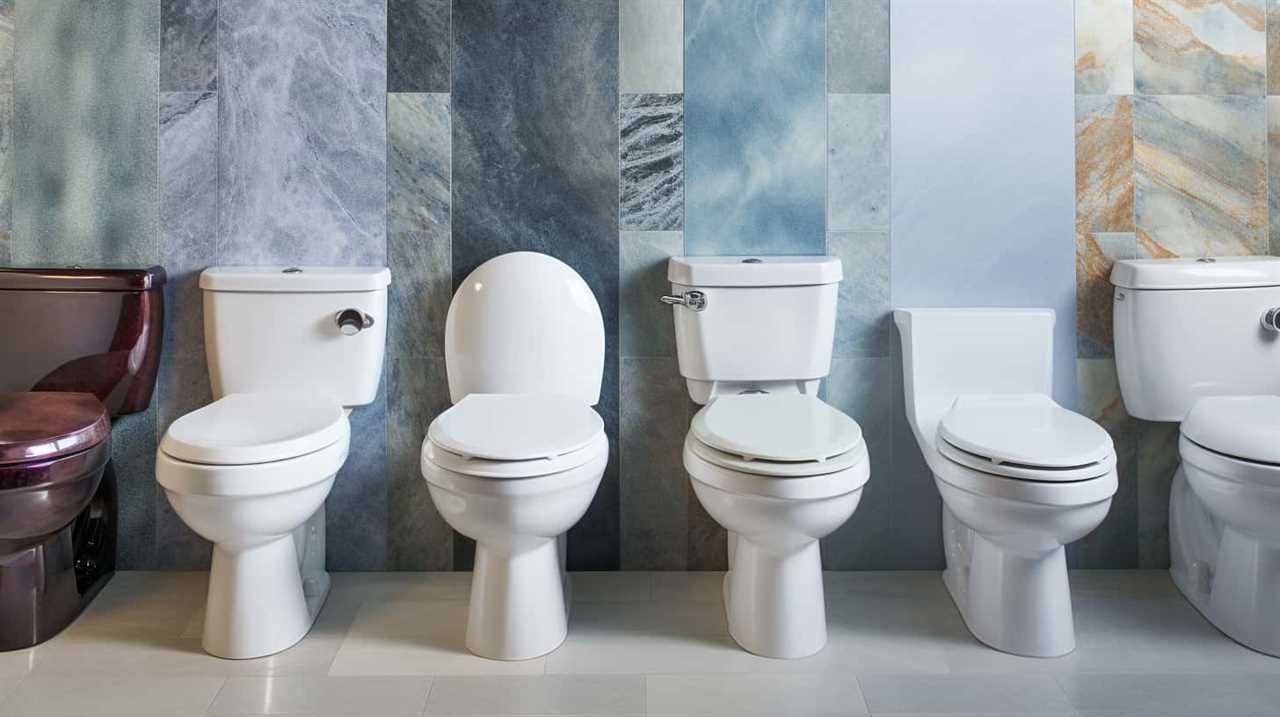
Are Bidets Commonly Found in Bathrooms in Puerto Del Carmen?
Bidets aren’t commonly found in bathrooms in Puerto Del Carmen. Instead, many people use alternative methods for disposing of toilet paper, such as placing it in a bin. This practice helps prevent plumbing issues.
Is It Safe to Drink Tap Water in Puerto Del Carmen?
Yes, it is safe to drink tap water in Puerto Del Carmen. The tap water quality is excellent. However, if you prefer alternatives, bottled water is widely available and many restaurants offer filtered water.
How Often Are the Sewage Systems in Puerto Del Carmen Maintained and Cleaned?
Yes, we maintain and clean the sewage systems in Puerto Del Carmen regularly. Our team ensures the frequency of sewage system maintenance is sufficient to keep them functioning properly. Our cleaning procedures are thorough and effective.
Are There Any Specific Rules or Regulations Regarding Toilet Paper Disposal in Puerto Del Carmen?
Yes, there are specific regulations in Puerto Del Carmen regarding toilet paper disposal. It is important to follow these rules to avoid clogging the sewage system and causing environmental damage by flushing non-flushable products.

Conclusion
So, can you flush toilet paper in Puerto Del Carmen?
The answer is yes! With its modern plumbing infrastructure, you can enjoy the convenience of flushing toilet paper without any worries.
Just remember to dispose of other bathroom waste properly to keep the system running smoothly.
Whether you’re a traveler or a local, these tips will ensure a hassle-free flushing experience.
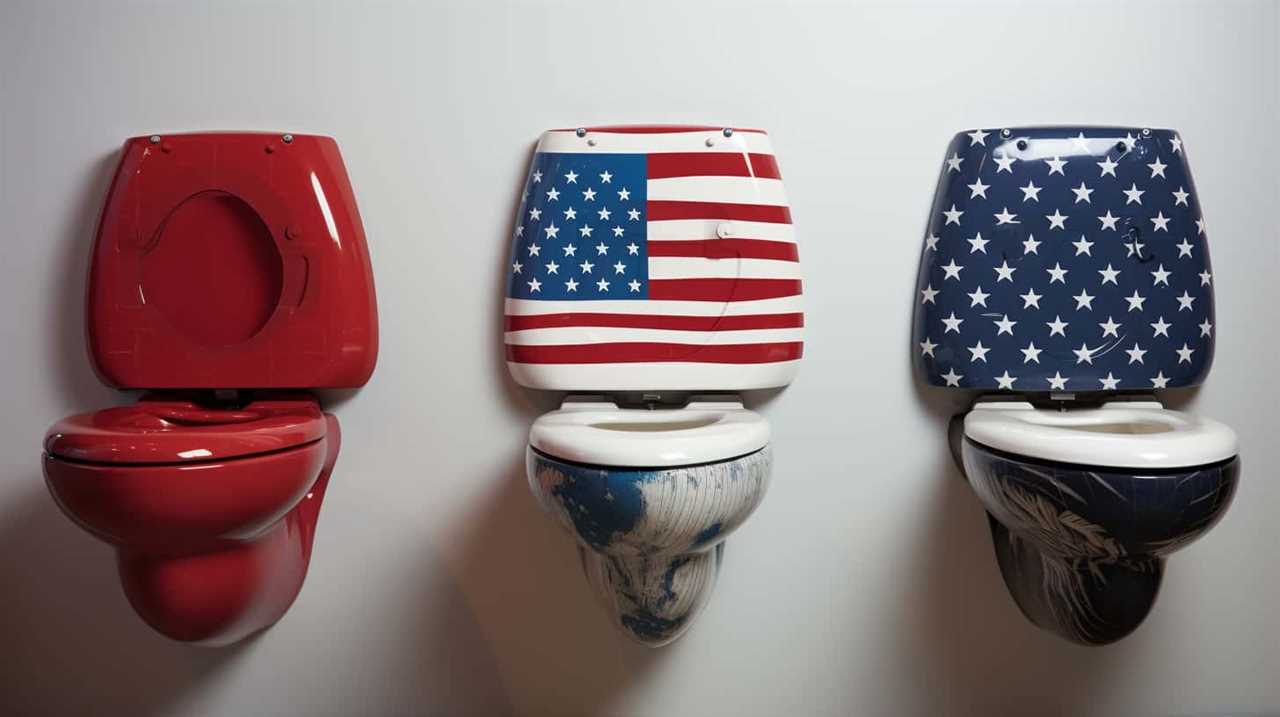
So go ahead, relax, and let the toilet paper disappear with a satisfying whoosh, leaving you with a clean and refreshed feeling.
With an impeccable eye for detail and a passion for bathroom-related, Ava leads our editorial team gracefully and precisely.
Under her guidance, Best Modern Toilet has flourished as the go-to resource for modern bathroom enthusiasts. In her free time, you might find Ava exploring antique shops and looking for vintage bathroom fixtures to add to her collection.
Bathtub
What to Do if You Flush a Large Object Down the Toilet

Have you ever been in a situation where a large object gets flushed down the toilet? It can be a troublesome predicament that needs immediate attention.
Well, fear not! In this article, we will guide you through the steps you need to take to handle this plumbing crisis with ease. From assessing the situation to seeking professional help if needed, we’ve got you covered.
So, let’s dive in and master the art of toilet rescue!
Key Takeaways
- Assess the situation by examining the toilet bowl, checking for signs of leakage, and inspecting the surrounding area for water damage.
- Stop the water flow by locating and turning off the shut-off valve near the base of the toilet to prevent further water from entering the bowl.
- If possible, retrieve the object using a toilet auger or a long-handled tool with a hook, being careful not to push it further into the drain.
- If unable to retrieve the object, consider using a plumbing snake to break up the clog or hook onto the object. If the situation becomes complex, seek professional help from a plumber specializing in toilet repairs and blockage removal.
Assess the Situation
First, we need to assess the situation and determine the severity of the problem after flushing a large object down the toilet. Assessing the damage is crucial in order to take immediate action.
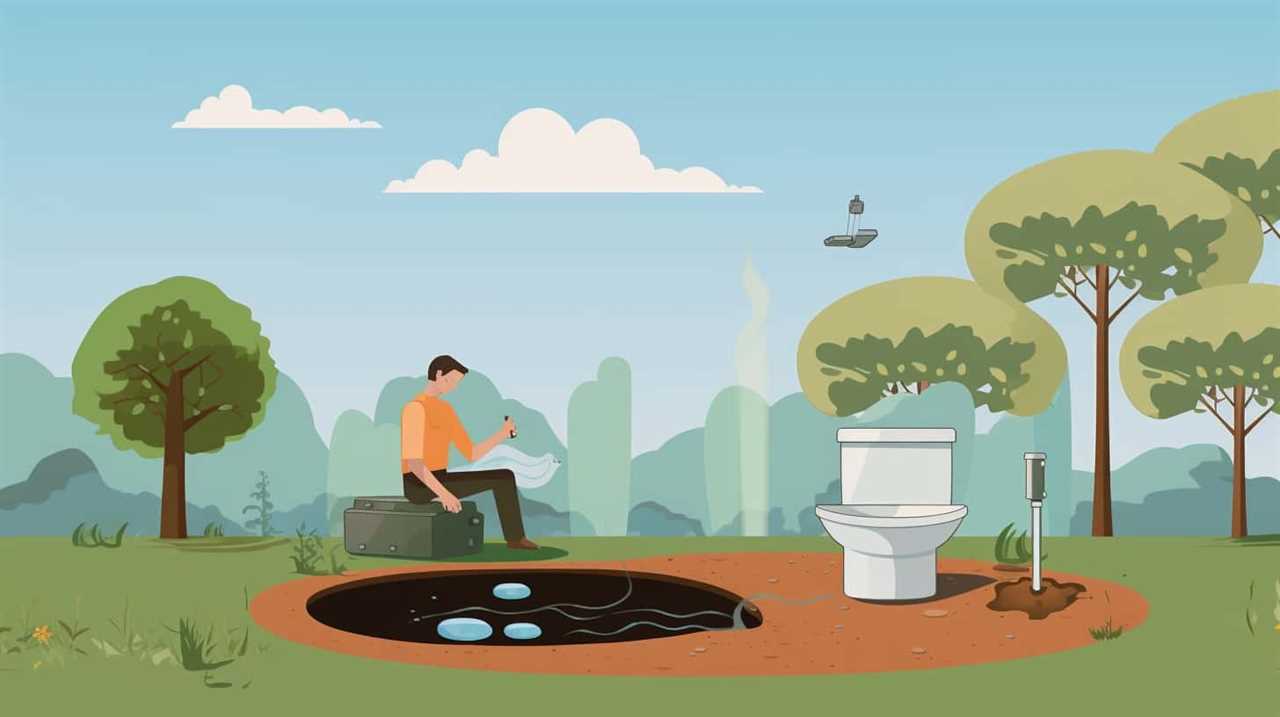
Start by examining the toilet bowl to see if it’s filled with water or overflowing. Take note of any signs of leakage or unusual sounds coming from the pipes. Carefully inspect the surrounding area for any water damage or wet spots on the floor. This will help you understand the extent of the problem and guide your next steps.
Once you have assessed the situation, you can move on to stop the water flow and prevent further damage.
Stop the Water Flow
To stop the water flow after flushing a large object down the toilet, we can use a shut-off valve located near the base of the toilet. This valve is typically a small, round knob that can be turned clockwise to shut off the water supply to the toilet.
By doing this, you can prevent any further water from entering the toilet bowl and potentially causing more damage or flooding. It’s important to act quickly in order to minimize the risk of overflowing and water damage to your bathroom.
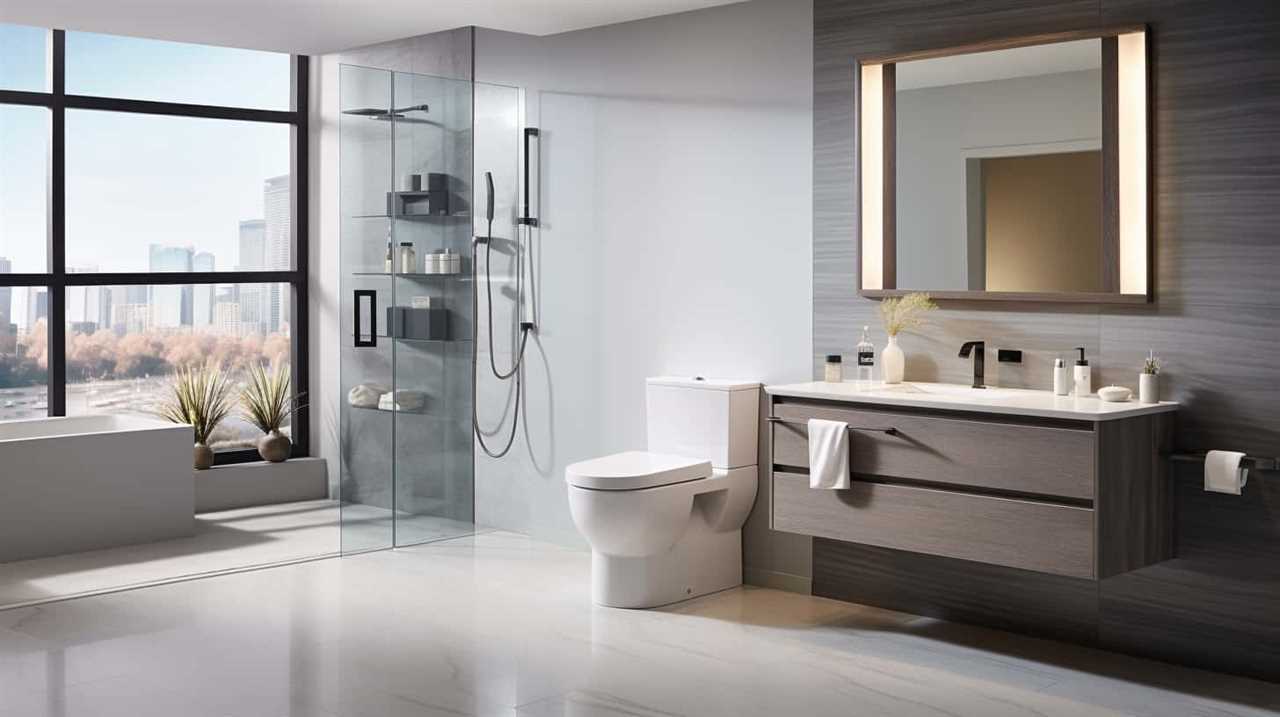
Once the water flow has been stopped, you can then proceed to assess the situation and determine the best course of action to remove the object and prevent future plumbing mishaps.
Remember to always exercise caution when dealing with plumbing issues and consider seeking professional help if needed.
Retrieve the Object (If Possible)
After stopping the water flow, we can now focus on retrieving the object from the toilet. It’s important to approach this task with caution to avoid causing further damage to the toilet.
First, put on a pair of rubber gloves to protect your hands.
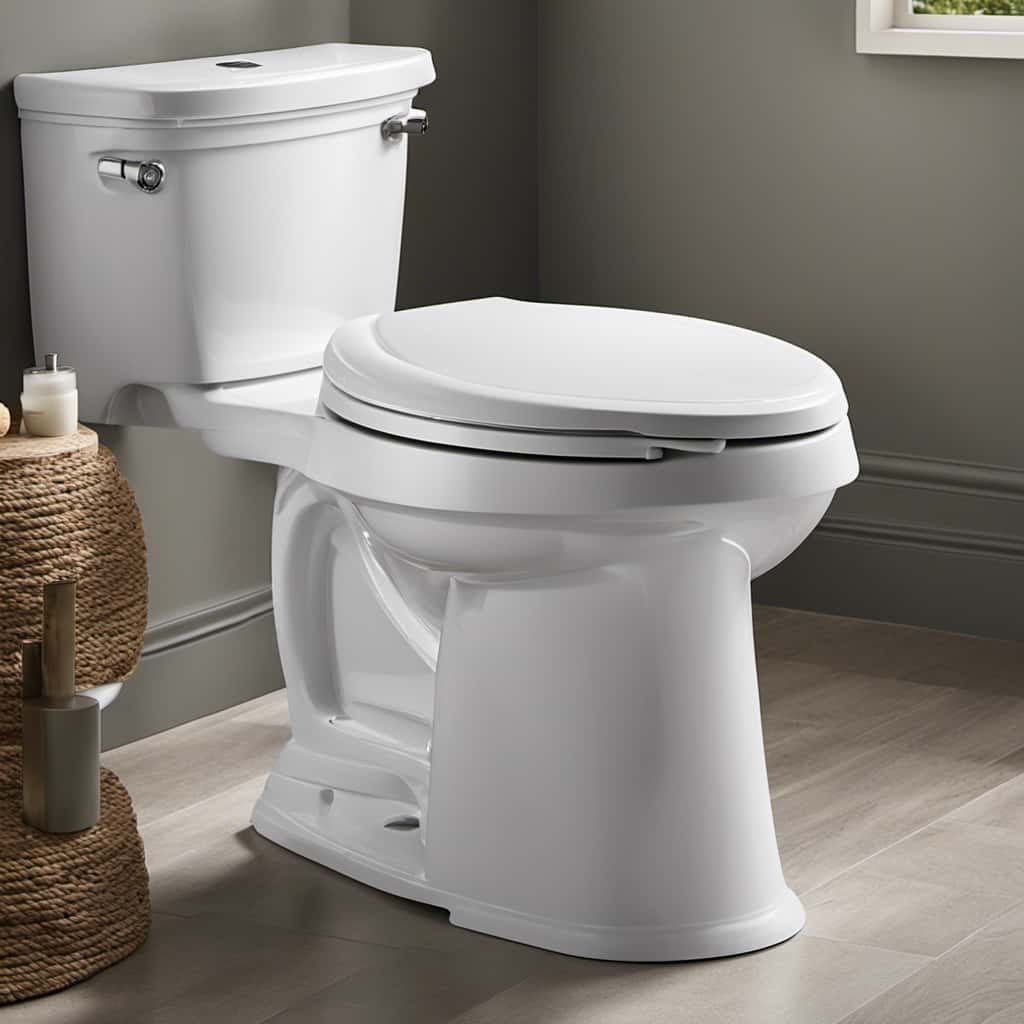
Use a toilet auger or a long-handled tool with a hook at the end to carefully reach into the toilet bowl and try to grasp the object. Gently maneuver the tool around the object, being mindful not to push it further into the plumbing system.
If the object is within reach, carefully lift it out of the toilet. If you encounter any resistance or are unable to retrieve the object, it’s best to stop and call a professional plumber to avoid causing further toilet damage.
Transitioning to the next section, if retrieving the object manually isn’t possible, you can try using a plumbing snake.
Use a Plumbing Snake
Now, let’s move on to using a plumbing snake to retrieve the object from the toilet. A plumbing snake is a handy tool that can be used to unclog toilets and pipes. It consists of a long, flexible metal cable with a coiled end. Here’s how you can use a plumbing snake to tackle the clog and retrieve the flushed object:
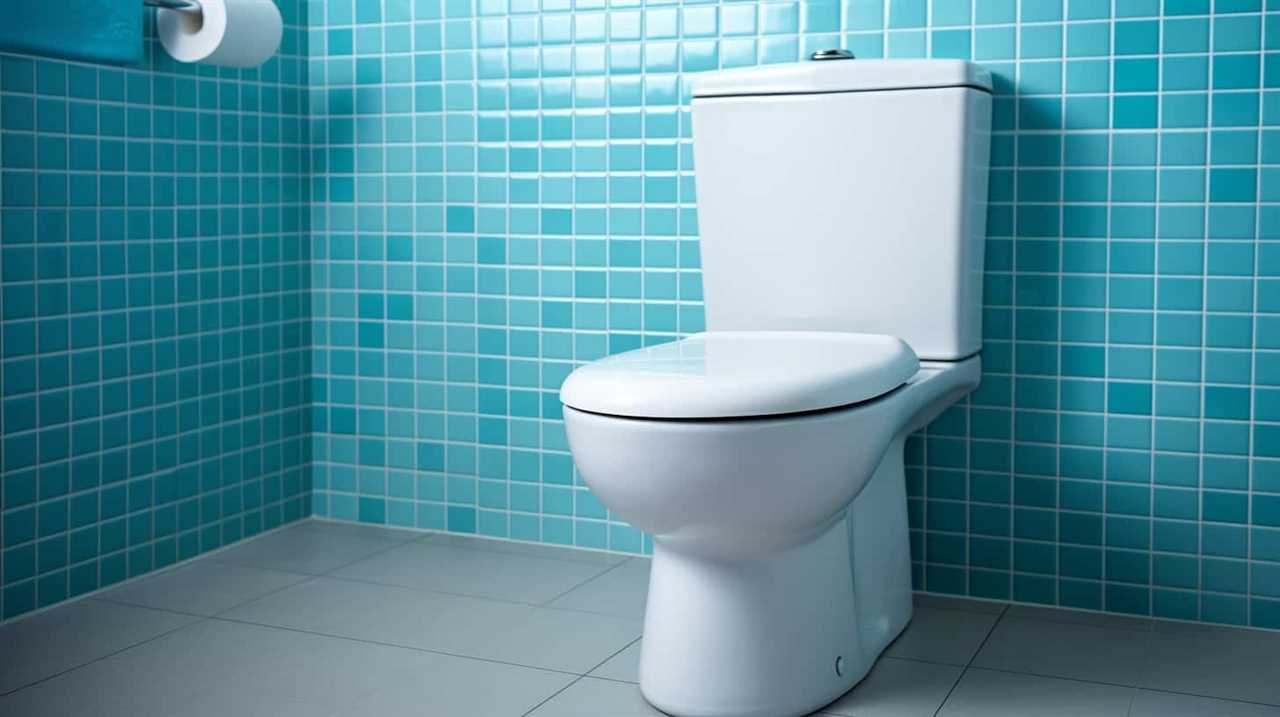
| Step | Instructions |
|---|---|
| 1 | Put on gloves and protective eyewear. |
| 2 | Insert the coiled end of the plumbing snake into the toilet bowl. |
| 3 | Slowly rotate the handle of the snake clockwise to feed it into the drain. |
| 4 | Continue pushing the snake further into the drain until you feel resistance. |
| 5 | Rotate the handle counterclockwise to break up the clog or hook onto the object. |
| 6 | Gently pull the snake back out, taking care not to damage the toilet bowl. |
| 7 | Dispose of the flushed object properly and flush the toilet to ensure it is unclogged. |
Using a plumbing snake is an effective DIY plumbing method to retrieve objects and unclog toilets. Remember to follow these steps carefully to avoid causing further damage.
Seek Professional Help if Necessary
If the object can’t be retrieved using a plumbing snake, we may need to seek professional help. In such cases, it’s advisable to contact a plumber who specializes in toilet repairs and blockage removal. Professional plumbers have the necessary tools, expertise, and experience to handle more complex situations. They can utilize advanced techniques like hydro jetting or drain cameras to locate and remove the object safely.
Seeking professional help ensures that the issue is resolved efficiently and effectively, minimizing any further damage to the plumbing system. Additionally, it’s important to learn from the experience and take steps to prevent future accidents. This includes being mindful of what gets flushed down the toilet and considering the use of drain screens or toilet locks to avoid similar situations in the future.
Frequently Asked Questions
Can I Use a Plunger to Try and Retrieve the Object?
Yes, we can try using a plunger to retrieve the object, but if it doesn’t work, we should consider calling a professional plumber or exploring alternative methods to safely remove the object.
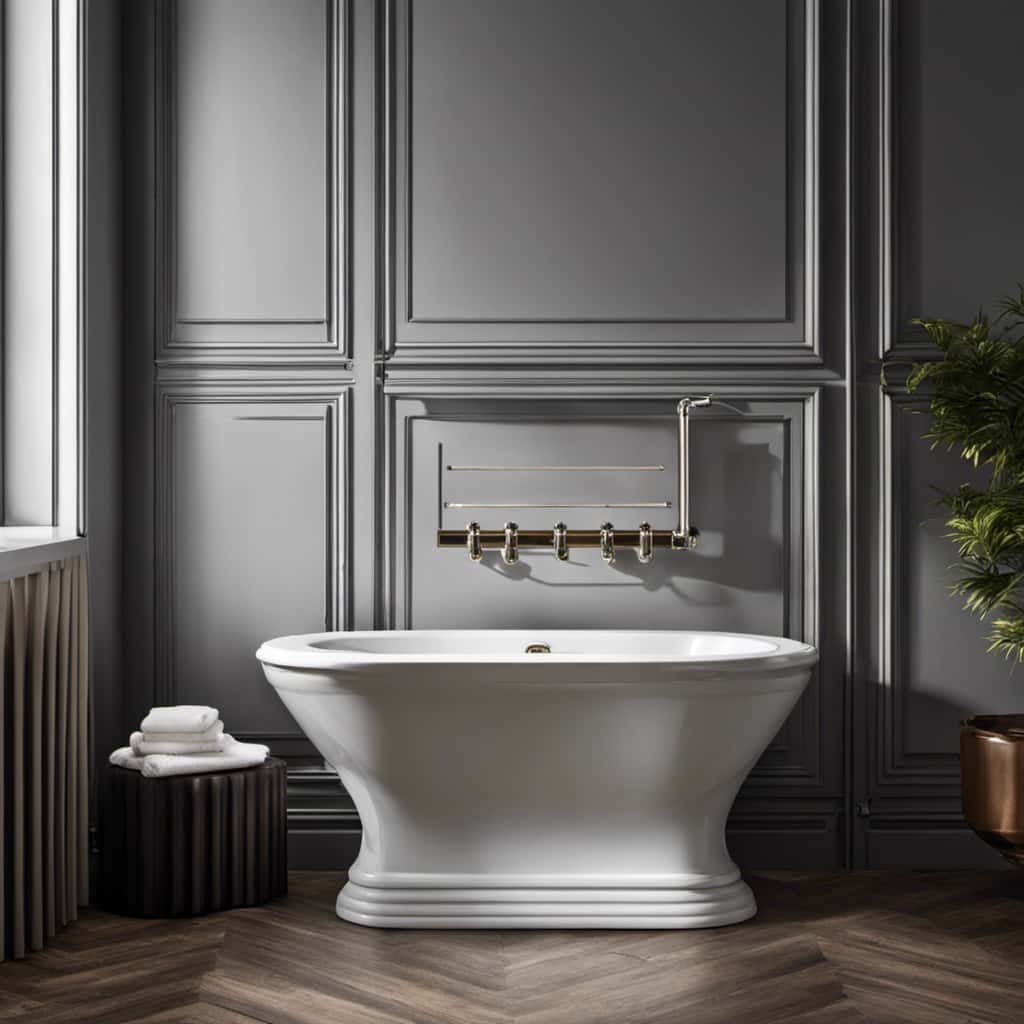
What Are Some Signs That the Object May Have Caused a Blockage in the Plumbing System?
If you notice slow draining, gurgling sounds, or water backing up in other fixtures, these are signs that a large object may have caused a blockage in the plumbing system. To prevent this, be mindful of what you flush and consider using a toilet lock.
Can I Use Chemical Drain Cleaners to Dissolve the Object?
We don’t recommend using chemical drain cleaners to dissolve the object. There are alternative methods, such as using a plunger or a plumbing snake, that are more effective and won’t cause further damage. If these methods don’t work, it’s best to seek professional assistance.
Are There Any Potential Dangers or Risks Associated With Using a Plumbing Snake?
When using a plumbing snake, there are potential risks if not used properly. It is important to follow the proper usage instructions to avoid damaging the pipes or causing further clogs.
Will My Homeowner’s Insurance Cover the Cost of a Professional Plumber if Needed?
Yes, homeowner’s insurance may cover the cost of a professional plumber if needed. However, it’s important to consider DIY methods first to avoid potential risks and dangers.

Conclusion
In conclusion, if you find yourself in the unfortunate situation of flushing a large object down the toilet, it’s important to assess the situation calmly and act quickly.
Stop the water flow, try to retrieve the object if possible, and use a plumbing snake if needed. Remember, seeking professional help may be necessary to resolve the issue completely.
Don’t let this mishap send you down the drain like a ship without a captain – take control and tackle the problem head-on.
With an impeccable eye for detail and a passion for bathroom-related, Ava leads our editorial team gracefully and precisely.
Under her guidance, Best Modern Toilet has flourished as the go-to resource for modern bathroom enthusiasts. In her free time, you might find Ava exploring antique shops and looking for vintage bathroom fixtures to add to her collection.
-
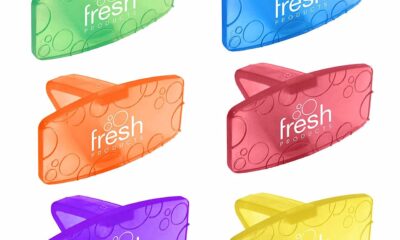
 Reviews2 months ago
Reviews2 months agoBest Toilet Air Freshener: Top 10 Picks for a Fresh-Smelling Bathroom [2024]
-
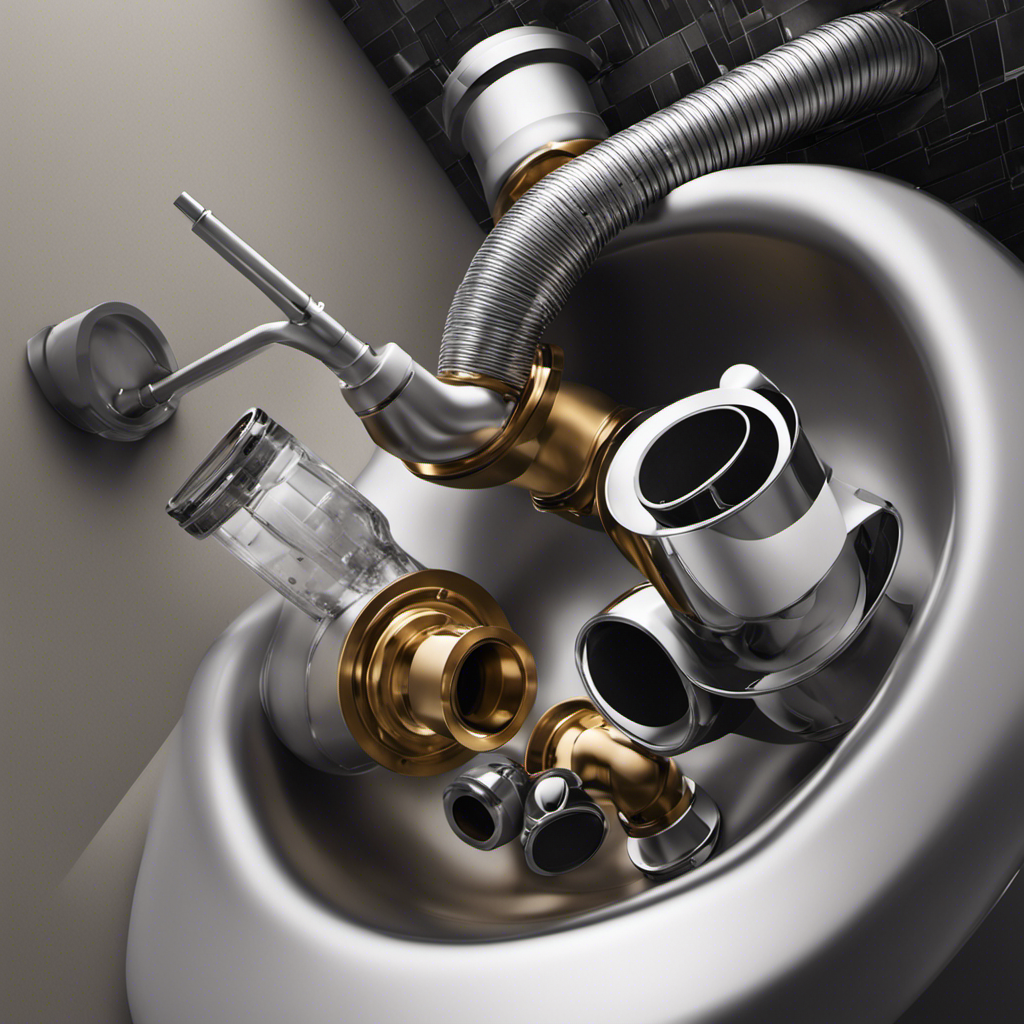
 FAQ - Advanced Bathroom Queries3 months ago
FAQ - Advanced Bathroom Queries3 months agoWhat Size Pipe for Toilet Drain
-
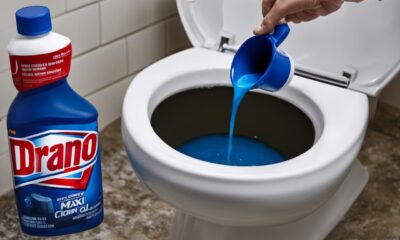
 FAQ - Advanced Bathroom Queries3 months ago
FAQ - Advanced Bathroom Queries3 months agoGuide: How to Use Drano Max Gel in Your Toilet
-

 FAQ - Advanced Bathroom Queries1 month ago
FAQ - Advanced Bathroom Queries1 month agoWhich Countries Use Bidets the Most
-

 FAQ - Advanced Bathroom Queries3 months ago
FAQ - Advanced Bathroom Queries3 months agoWhy Does My Poop Leave Streaks in the Toilet
-
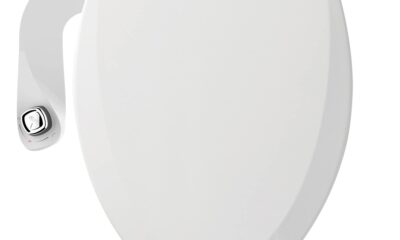
 Reviews2 months ago
Reviews2 months agoBest Waterless Toilets: Top Options for Eco-Friendly Bathrooms [2024]
-
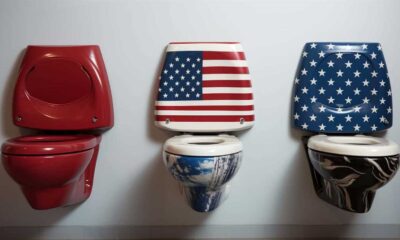
 Buying Guides2 months ago
Buying Guides2 months agoWhat to Do When You Accidentally Flushed Something Down the Toilet
-

 FAQ - Advanced Bathroom Queries3 months ago
FAQ - Advanced Bathroom Queries3 months agoHow Do Toilets Work in Bali





















